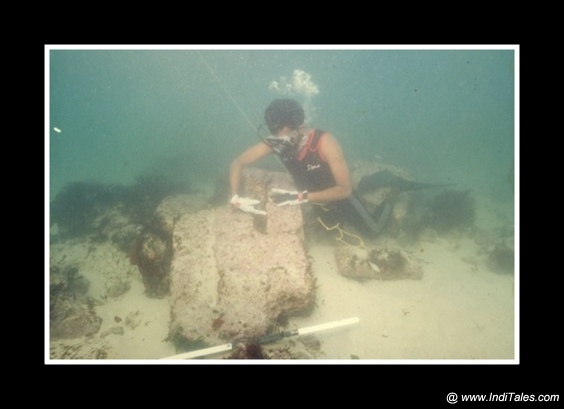Anuradha: Namaste! today we have Dr. A S Gaur who is a marine archaeologist. I first discovered underwater archaeology when I visited Dwarka. I read a book by Dr. S R Rao who has done archaeology in Dwarka. Then I learned that this was done by the National Institute of Oceanography which is right next to my home in Goa. I requested Dr. Anirudh Singh Gaur Ji to tell us a little bit about underwater archaeology. Anirudh Ji welcome to the Detours.
Underwater Archaeology in India
A S Gaur: Thank you so much, Anuradha Ji. I am glad that you have an interest in maritime archeology. Let me explain what underwater archaeology is. At the National Institute of Oceanography, our mandate is to understand each and every aspect of oceanography. That includes physics, chemistry, and biology. A small group is working on underwater archaeology.
What is Underwater Archaeology?
Sea level is never static, every time it goes up and down. It is said around 1,000 years ago the sea level was 100 meters lower. At that time a major population of the coastal area was staying in that particular area.
Submerge
Subsequently when sea levels started rising those heavily inhabited sites got submerged. Now that creates scope for underwater archaeology. In later periods the range of 1-2 meter sea level has changed. In coastal areas like Gujarat or Tamil Nadu, the land formation is gentle and sloppy. So a rise of one meter also affects a large area. Ultimately some coastal habitation will be affected. In Gujarat, in the historical period, 1 meter has gone down. This means whatever site was close to the coast is no longer accessible within the coastal area. That is how that site will be abundant. Those remains are one of the major scopes of underwater archaeology.
Shipwrecks
The second aspect we study is the shipwrecks. Right from the Indus civilization, even prior to that one, shipping has been the major aspect of human society. That led to trade and commerce with contemporary culture and civilization. There is a famous reference that the people of the Indus Valley civilization traded with the people of Mesopotamia and Egyptian civilization through the sea route. Because of antiquity in Oman and the United Arab Emirates, this cannot go through a land route. As it will be the longest one and the sea route will be the shortest one.
The…
Click Here to Read the Full Original Article at Inditales…
